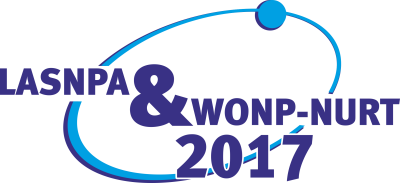Speaker
Description
Every day, the population is exposed to various types of radiation sources. In particular, the radon is the most common radiation present in a gas form. Radon belongs to the radioactive series of uranium and in its decay emits alpha particles of 5.49 MeV. To detect these alpha particles, an effective method very commun is to use Solid State Nuclear Track Detectors (SSNTD). This work propose a comparative study of track diameters using three kinds of CR-39 SSNTDs concerning the chemical etching time. The measurements have been performed exposing the sample plastic detectors to an 241Am radiation source during about 6.5 hours and chemical etched using well known solutions [2-4]. Two different temperatures have been used in this process (70 and 80 $^{\circ}$C) and different ranges of time. The diameter of the tracks has been obtained and followed between one chemical etching and other by taking digitalized images with calibration scale of 50μm and using the ImageJ code [5]. The track density have been calculated and the comparative results will be presented.
References
[1] S. Bing, Nucl. Tracks Radiat. Meas. 22, (1993) 451.
[2] J. N. Corrêa and et al., Rad. Phys. and Chem. 104, (2014) 104.
[3] F H Manocchi and et al., J. Radiol. Prot. 34, (2014) 339.
[4] S. Guedes and et al., Radiation Measurements 31, (1999) 287.
[5] Programme ImageJ: http://imagej.nih.gov/ij/index.html.

